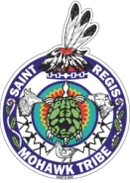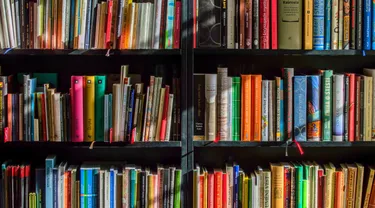-
Community & Family Services
- Care Management Program
- Child Support Enforcement Unit
- Family Support
- HCBS Waiver
- Home Improvement Supplement Program (HIP)
- Homeowner's Assistance Fund
- Individual Residential Alternatives (IRA)
- Individual Supports and Services (ISS) - Housing Subsidy Program
- Office of the Family Advocate
- Three Sisters Program
- Tribal Vocational Rehabilitation (TVR)
- Community Partnership Fund
- Economic Development
- Education
- Environment
- Executive Director's Office
- Finance
- Generations Park
- Grants & Contracts
-
Health Services
- A/CDP Outpatient
- A/CDP Prevention
- Partridge House (Inpatient)
- Ronthahiiohsthá:ke Clubhouse
- Business Office
- Centering Pregnancy
- Dental Clinic
- Health Promotion and Planning
- Laboratory
- Let's Get Healthy - Diabetes Center for Excellence
- Medical Clinic
- Mental Health - Kanikonri:ihne (Good Mind Counseling)
- Outreach Chronic Care Nursing
- Pharmacy
- School-Based Health Center
- Home Improvement Supplement Program (HIP)
- Human Resources
- Office for the Aging
- Office of Emergency Management and Safety
- Planning and Infrastructure
- Social Services Division
- Tribal Historic Preservation Office
- Tribal Police
Fisheries
Working towards maintaining a healthy fish population.
What is the job of fisheries?
Fisheries can have a wide range of different tasks ranging from monitoring different fish populations to creating hatcheries where fish can be hatched, grown and released back into their natural habitat.
Map of Akwesasne

What game fish are native to our waters in Akwesasne?
We have a plethora of fish that live within our waters. Some more abundant than others and a few species being considered rare.
Game species native to Akwesasne:
Muskellunge
Northern Pike
Smallmouth Bass
Largemouth Bass
Yellow Perch
Black Crappie
Pumpkinseed
Rock Bass
Bowfin
Yellow, Black and Brown Bullhead
Channel Catfish
Burbot
Freshwater Drum
American Eel
Longnose Gar
Common Carp
Mooneye
Walleye
Grass Pickeral
Brook Trout
Brown Trout
Rainbow Trout
Lake Trout-Rare
Chinook Salmon
Atlantic Salmon-Rare
Steelhead Salmon
Quillback
Lake Sturgeon
White Bass
Shorthead, Silver, Greater Redhorse
Link for Inland Fishes of NY
http://www2.dnr.cornell.edu/ce...
Fish Harvest
When you are out enjoying the fishing season you should always keep ethics in mind when harvesting your fish. The biggest fish you catch isn’t going to be the best eating but may be a story for you to tell but should you keep the fish? Pictures can tell a story just as well as a wall mounted fish. Keep in mind that the large fish you have caught could be one of the individuals that has bred year after year contributing to the population. Releasing them benefits not only the population but you as well because that large fish will continue to breed and produce more that could grow to the same size or larger.
Keeping the smaller or midsized fish for consumption is the best. Not only do they taste better they also are more abundant than the larger individuals many see as trophies.
Culturally Significant Fish
The Lake Sturgeon and American Eel are two of the most culturally significant fish on the territory. Lake Sturgeon were highly valued for their meat however the entire fish was utilized. The air bladder of the fish was used for isinglass which could be used as a type of adhesive for paints. The roe is the fully ripe, egg filled ovaries which were another valuable food source. The tough skin of the fish could be utilized for making small bags.
The American Eel was a highly important food source as it was harvested and smoked to be preserved for the winter.

Consumption
With this in mind you must also think of consumption. Eating wild caught fish has its benefits however there is risk involved to your health. The biggest issues with fish consumption in the St. Lawrence Valley are PCBs, dioxin, mirex, and mercury as well as numerous other chemicals. Over time these chemicals build up in the body and may lead to small health problems down the road and can lead to birth defects and cancer. Some species have a different level of chemical contaminants compared to others.
It would be advised to space out your fish meals to 4 times a month. This is particularly important for pregnant women and young children who are more susceptible to the contaminants.
Contaminants
Contaminants can be absorbed into fish in multiple ways. Either by the food they ingest which is already contaminated, water flowing over their gills that contains the contaminants is absorbed with the oxygen they receive from the water itself. These contaminants are mostly stored in the skin and fat of the fish which need to be cut away when processing your catch. Larger fish may be more contaminated than smaller fish. In our area the channel Catfish has the highest amount of contaminated meat.
Link to NYS Department of Health Fish Consumption
https://www.health.ny.gov/environmental/outdoors/fish/health_advisories/tips
Akwesasne Family Guide To Eating Locally-Caught Fish
https://www.epa.gov/sites/default/files/2016-09/documents/srmt_fishadvisory_webfinal.pdf

Hybrid Pumpkinseed
Habitat Restoration
There are 5 steps to restoring fish habitat.
- Site re-contouring
- In channel work. Spawning gravels, rifles, runs and pools.
- In-stream woody materials and structures.
- Biotechnical treatments
- Native Revegetation
Self sustaining Habitat Story Map
https://storymaps.arcgis.com/s...
Here in Akwesasne we have many prime fishery habitats for our local species but can they be improved? Yes. Our future plans may include implementing restoration of breeding habitat for large game fish such as Northern Pike and Musky.

Juvenile Lake Sturgeon
Mohawk Names of Fish
American Eel - Kiawerón:ko
Atlantic Salmon - Kiokia'kton'kó:wa
Black Crappie - Atennà:taron My Dad used this name for a sunfish. Is a Black Crappie a sunfish?
Brown Bullhead - Rabáhbot or Onawa'tstáiaks-onawa’tstakón:ha
Brown Trout - Kiokia'kton
Carp - Skentstén:ri
Channel Catfish - Onón:ken onòn:kwe
Chinook Salmon – Nikentsióten this word just means “this(or that) kind of fish”
Lake Trout – Tsiotiakten tsiokiá’kton is how we’d spell/write it here in Akwesasne
Largemouth Bass - Tsiskawí:iak
Longnose Gar - Ohstó:ron
Muskellunge - Kanótsioht
Northern Pike - Tsikónhses
Pumpkinseed/sunfish - Atená:tara
Rainbow Trout - Iónhiotekiokia'kton Ióhnhiote = rainbow kiokia’kton = trout
Rock Bass - Oneniokón:ha
Lake Sturgeon - Teiokiéntaron or Kentsion'kó:wa
Walleye - Skakahra'ksen
White Perch - Oiahè:ta
White Sucker - Tsiononhwarí:io
Yellow Perch - Wahiahé:ta
“The Fish We turn our minds to the all the Fish life in the water. They were instructed to cleanse and purify the water. They also give themselves to us as food. We are grateful that we can still find pure water. So, we turn now to the Fish and send our greetings and thanks.”
Haudenosaunee Thanksgiving Address Paragraph 4

